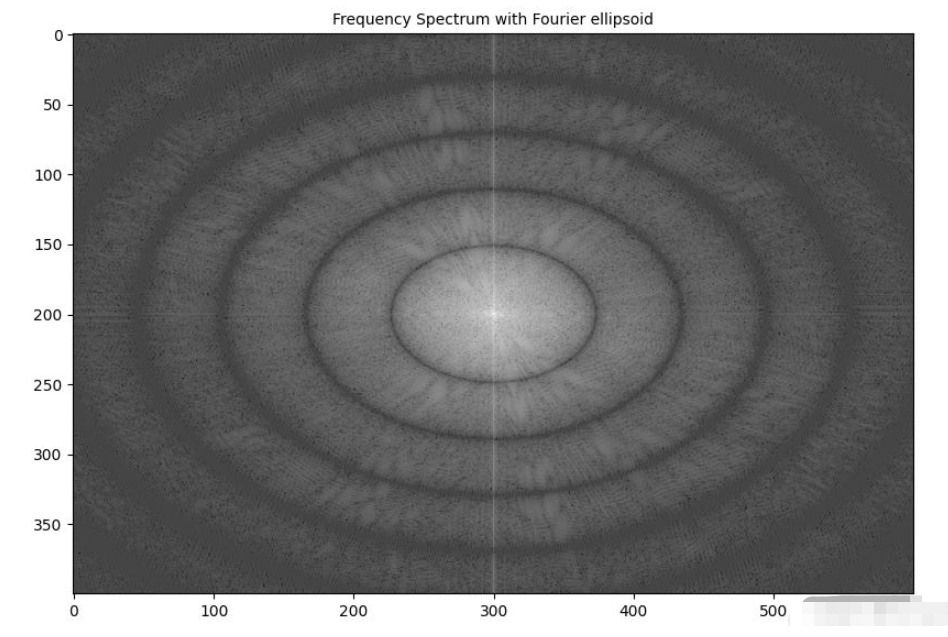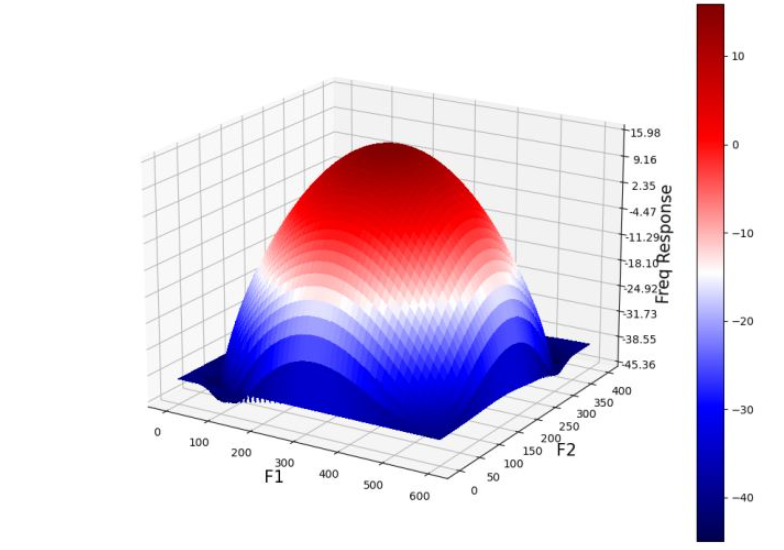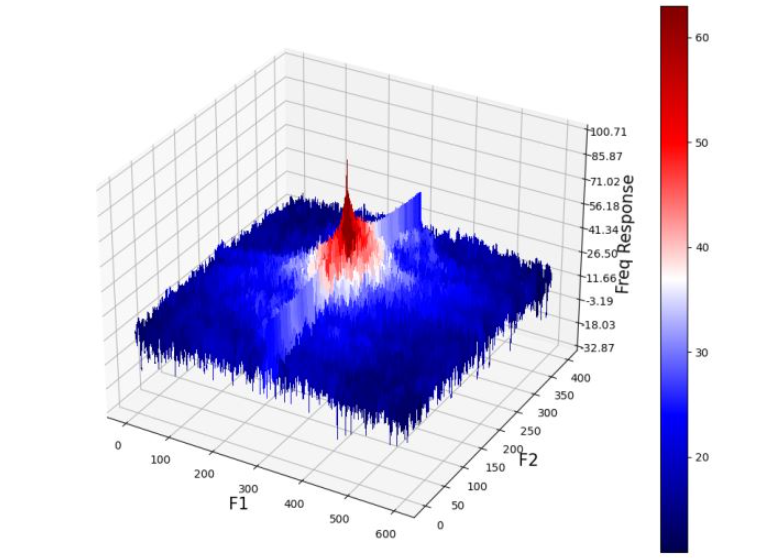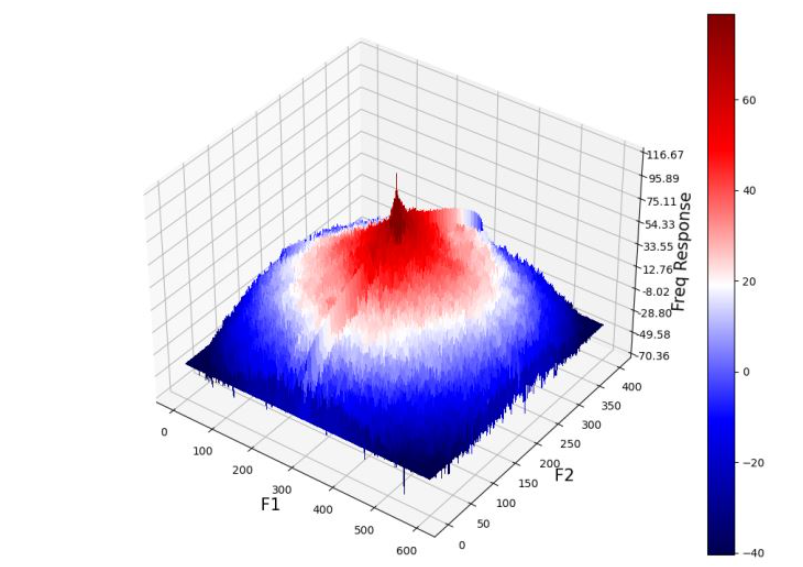您好,登錄后才能下訂單哦!
您好,登錄后才能下訂單哦!
這篇文章主要介紹“Python怎么實現低通濾波器模糊圖像功能”的相關知識,小編通過實際案例向大家展示操作過程,操作方法簡單快捷,實用性強,希望這篇“Python怎么實現低通濾波器模糊圖像功能”文章能幫助大家解決問題。
低通濾波器 (Low Pass Filter, LPF) 過濾了圖像中的高頻部分,并僅允許低頻部分通過。因此,在圖像上應用 LPF 會刪除圖像中的細節/邊緣和噪聲/離群值,此過程也稱為圖像模糊(或平滑),圖像平滑可以作為復雜圖像處理任務的預處理部分。
圖像模糊通常包含以下類型:
邊緣模糊 (Edge) 這種類型的模糊通常通過卷積顯式地應用于圖像,例如線性濾波器核或高斯核等,使用這些濾波器核可以平滑/去除圖像中不必要的細節/噪聲。
運動模糊 (Motion) 通常是由于相機在拍攝圖像時抖動所產生的,也就是說,攝像機或被拍攝的對象處于移動狀態。我們可以使用點擴展函數來模擬這種模糊。
失焦模糊 (de-focus) 當相機拍攝的對象失焦時,會產生這種類型的模糊;我們可以使用模糊 (blur) 核來模擬這種模糊。
接下來,我們創建以上三種不同類型的核,并將它們應用于圖像以觀察不同類型核處理圖像后的結果。
(1) 我們首先定義函數 get_gaussian_edge_blur_kernel() 以返回 2D 高斯模糊核用于邊緣模糊。該函數接受高斯標準差 ( σ σ σ) 以及創建 2D 核的大小(例如,sz = 15 將創建尺寸為 15x15 的核)作為函數的參數。如下所示,首先創建了一個 1D 高斯核,然后計算兩個 1D 高斯核的外積返回 2D 核:
import numpy as np import numpy.fft as fp from skimage.io import imread from skimage.color import rgb2gray import matplotlib.pyplot as plt import cv2 def get_gaussian_edge_blur_kernel(sigma, sz=15): # First create a 1-D Gaussian kernel x = np.linspace(-10, 10, sz) kernel_1d = np.exp(-x**2/sigma**2) kernel_1d /= np.trapz(kernel_1d) # normalize the sum to 1.0 # create a 2-D Gaussian kernel from the 1-D kernel kernel_2d = kernel_1d[:, np.newaxis] * kernel_1d[np.newaxis, :] return kernel_2d
(2) 接下來,定義函數 get_motion_blur_kernel() 以生成運動模糊核,得到給定長度且特定方向(角度)的線作為卷積核,以模擬輸入圖像的運動模糊效果:
def get_motion_blur_kernel(ln, angle, sz=15): kern = np.ones((1, ln), np.float32) angle = -np.pi*angle/180 c, s = np.cos(angle), np.sin(angle) A = np.float32([[c, -s, 0], [s, c, 0]]) sz2 = sz // 2 A[:,2] = (sz2, sz2) - np.dot(A[:,:2], ((ln-1)*0.5, 0)) kern = cv2.warpAffine(kern, A, (sz, sz), flags=cv2.INTER_CUBIC) return kern
函數 get_motion_blur_kernel() 將模糊的長度和角度以及模糊核的尺寸作為參數,函數使用 OpenCV 的 warpaffine() 函數返回核矩陣(以矩陣中心為中點,使用給定長度和給定角度得到核)。
(3) 最后,定義函數 get_out_of_focus_kernel() 以生成失焦核(模擬圖像失焦模糊),其根據給定半徑創建圓用作卷積核,該函數接受半徑 R (Deocus Radius) 和要生成的核大小作為輸入參數:
def get_out_of_focus_kernel(r, sz=15): kern = np.zeros((sz, sz), np.uint8) cv2.circle(kern, (sz, sz), r, 255, -1, cv2.LINE_AA, shift=1) kern = np.float32(kern) / 255 return kern
(4) 接下來,實現函數 dft_convolve(),該函數使用圖像的逐元素乘法和頻域中的卷積核執行頻域卷積(基于卷積定理)。該函數還繪制輸入圖像、核和卷積計算后得到的輸出圖像:
def dft_convolve(im, kernel):
F_im = fp.fft2(im)
#F_kernel = fp.fft2(kernel, s=im.shape)
F_kernel = fp.fft2(fp.ifftshift(kernel), s=im.shape)
F_filtered = F_im * F_kernel
im_filtered = fp.ifft2(F_filtered)
cmap = 'RdBu'
plt.figure(figsize=(20,10))
plt.gray()
plt.subplot(131), plt.imshow(im), plt.axis('off'), plt.title('input image', size=10)
plt.subplot(132), plt.imshow(kernel, cmap=cmap), plt.title('kernel', size=10)
plt.subplot(133), plt.imshow(im_filtered.real), plt.axis('off'), plt.title('output image', size=10)
plt.tight_layout()
plt.show()(5) 將 get_gaussian_edge_blur_kernel() 核函數應用于圖像,并繪制輸入,核和輸出模糊圖像:
im = rgb2gray(imread('3.jpg'))
kernel = get_gaussian_edge_blur_kernel(25, 25)
dft_convolve(im, kernel)(6) 接下來,將 get_motion_blur_kernel() 函數應用于圖像,并繪制輸入,核和輸出模糊圖像:
kernel = get_motion_blur_kernel(30, 60, 25) dft_convolve(im, kernel)
(7) 最后,將 get_out_of_focus_kernel() 函數應用于圖像,并繪制輸入,核和輸出模糊圖像:
kernel = get_out_of_focus_kernel(15, 20) dft_convolve(im, kernel)
scipy.ndimage 模塊提供了一系列可以在頻域中對圖像應用低通濾波器的函數。本節中,我們通過幾個示例學習其中一些濾波器的用法。
使用 scipy.ndimage 庫中的 fourier_gaussian() 函數在頻域中使用高斯核執行卷積操作。
(1) 首先,讀取輸入圖像,并將其轉換為灰度圖像,并通過使用 FFT 獲取其頻域表示:
import numpy as np
import numpy.fft as fp
from skimage.io import imread
import matplotlib.pyplot as plt
from scipy import ndimage
im = imread('1.png', as_gray=True)
freq = fp.fft2(im)(2) 接下來,使用 fourier_gaussian() 函數對圖像執行模糊操作,使用兩個具有不同標準差的高斯核,繪制輸入、輸出圖像以及功率譜:
fig, axes = plt.subplots(2, 3, figsize=(20,15))
plt.subplots_adjust(0,0,1,0.95,0.05,0.05)
plt.gray() # show the filtered result in grayscale
axes[0, 0].imshow(im), axes[0, 0].set_title('Original Image', size=10)
axes[1, 0].imshow((20*np.log10( 0.1 + fp.fftshift(freq))).real.astype(int)), axes[1, 0].set_title('Original Image Spectrum', size=10)
i = 1
for sigma in [3,5]:
convolved_freq = ndimage.fourier_gaussian(freq, sigma=sigma)
convolved = fp.ifft2(convolved_freq).real # the imaginary part is an artifact
axes[0, i].imshow(convolved)
axes[0, i].set_title(r'Output with FFT Gaussian Blur, $\sigma$={}'.format(sigma), size=10)
axes[1, i].imshow((20*np.log10( 0.1 + fp.fftshift(convolved_freq))).real.astype(int))
axes[1, i].set_title(r'Spectrum with FFT Gaussian Blur, $\sigma$={}'.format(sigma), size=10)
i += 1
for a in axes.ravel():
a.axis('off')
plt.show()scipy.ndimage 模塊的函數 fourier_uniform() 實現了多維均勻傅立葉濾波器。頻率陣列與給定尺寸的方形核的傅立葉變換相乘。接下來,我們學習如何使用 LPF (均值濾波器)模糊輸入灰度圖像。
(1) 首先,讀取輸入圖像并使用 DFT 獲取其頻域表示:
im = imread('1.png', as_gray=True)
freq = fp.fft2(im)(2) 然后,使用函數 fourier_uniform() 應用 10x10 方形核(由功率譜上的參數指定),以獲取平滑輸出:
freq_uniform = ndimage.fourier_uniform(freq, size=10)
(3) 繪制原始輸入圖像和模糊后的圖像:
fig, (axes1, axes2) = plt.subplots(1, 2, figsize=(20,10))
plt.gray() # show the result in grayscale
im1 = fp.ifft2(freq_uniform)
axes1.imshow(im), axes1.axis('off')
axes1.set_title('Original Image', size=10)
axes2.imshow(im1.real) # the imaginary part is an artifact
axes2.axis('off')
axes2.set_title('Blurred Image with Fourier Uniform', size=10)
plt.tight_layout()
plt.show()(4) 最后,繪制顯示方形核的功率譜:
plt.figure(figsize=(10,10))
plt.imshow( (20*np.log10( 0.1 + fp.fftshift(freq_uniform))).real.astype(int))
plt.title('Frequency Spectrum with fourier uniform', size=10)
plt.show()與上一小節類似,通過將方形核修改為橢圓形核,我們可以使用橢圓形核生成模糊的輸出圖像。
(1) 類似的,我們首先在圖像的功率譜上應用函數 fourier_ellipsoid(),并使用 IDFT 在空間域中獲得模糊后的輸出圖像:
freq_ellipsoid = ndimage.fourier_ellipsoid(freq, size=10) im1 = fp.ifft2(freq_ellipsoid)
(2) 接下來,繪制原始輸入圖像和模糊后的圖像:
fig, (axes1, axes2) = plt.subplots(1, 2, figsize=(20,10))
axes1.imshow(im), axes1.axis('off')
axes1.set_title('Original Image', size=10)
axes2.imshow(im1.real) # the imaginary part is an artifact
axes2.axis('off')
axes2.set_title('Blurred Image with Fourier Ellipsoid', size=10)
plt.tight_layout()
plt.show()(3) 最后,顯示應用橢圓形核后圖像的頻譜:
plt.figure(figsize=(10,10))
plt.imshow( (20*np.log10( 0.1 + fp.fftshift(freq_ellipsoid))).real.astype(int))
plt.title('Frequency Spectrum with Fourier ellipsoid', size=10)
plt.show()
我們已經學習了如何在實際應用中使用 numpy.fft 模塊的 2D-FFT。在本節中,我們將介紹 scipy.fftpack 模塊的 fft2() 函數用于實現高斯模糊。
(1) 使用灰度圖像作為輸入,并使用 FFT 從圖像中創建 2D 頻率響應數組:
import numpy as np
import numpy.fft as fp
from skimage.color import rgb2gray
from skimage.io import imread
import matplotlib.pyplot as plt
from scipy import signal
from matplotlib.ticker import LinearLocator, FormatStrFormatter
im = rgb2gray(imread('1.png'))
freq = fp.fft2(im)(2) 通過計算兩個 1D 高斯核的外積,在空間域中創建高斯 2D 核用作 LPF:
kernel = np.outer(signal.gaussian(im.shape[0], 1), signal.gaussian(im.shape[1], 1))
(3) 使用 DFT 獲得高斯核的頻率響應:
freq_kernel = fp.fft2(fp.ifftshift(kernel))
(4) 使用卷積定理通過逐元素乘法在頻域中將 LPF 與輸入圖像卷積:
convolved = freq*freq_kernel # by the Convolution theorem
(5) 使用 IFFT 獲得輸出圖像,需要注意的是,要正確顯示輸出圖像,需要縮放輸出圖像:
im_blur = fp.ifft2(convolved).real im_blur = 255 * im_blur / np.max(im_blur)
(6) 繪制圖像、高斯核和在頻域中卷積后獲得圖像的功率譜,可以使用 matplotlib.colormap 繪制色,以了解不同坐標下的頻率響應值:
plt.figure(figsize=(20,20))
plt.subplot(221), plt.imshow(kernel, cmap='coolwarm'), plt.colorbar()
plt.title('Gaussian Blur Kernel', size=10)
plt.subplot(222)
plt.imshow( (20*np.log10( 0.01 + fp.fftshift(freq_kernel))).real.astype(int), cmap='inferno')
plt.colorbar()
plt.title('Gaussian Blur Kernel (Freq. Spec.)', size=10)
plt.subplot(223), plt.imshow(im, cmap='gray'), plt.axis('off'), plt.title('Input Image', size=10)
plt.subplot(224), plt.imshow(im_blur, cmap='gray'), plt.axis('off'), plt.title('Output Blurred Image', size=10)
plt.tight_layout()
plt.show()(7) 要繪制輸入/輸出圖像和 3D 核的功率譜,我們定義函數 plot_3d(),使用 mpl_toolkits.mplot3d 模塊的 plot_surface() 函數獲取 3D 功率譜圖,給定相應的 Y 和Z值作為 2D 陣列傳遞:
def plot_3d(X, Y, Z, cmap=plt.cm.seismic):
fig = plt.figure(figsize=(20,20))
ax = fig.gca(projection='3d')
# Plot the surface.
surf = ax.plot_surface(X, Y, Z, cmap=cmap, linewidth=5, antialiased=False)
#ax.plot_wireframe(X, Y, Z, rstride=10, cstride=10)
#ax.set_zscale("log", nonposx='clip')
#ax.zaxis.set_scale('log')
ax.zaxis.set_major_locator(LinearLocator(10))
ax.zaxis.set_major_formatter(FormatStrFormatter('%.02f'))
ax.set_xlabel('F1', size=15)
ax.set_ylabel('F2', size=15)
ax.set_zlabel('Freq Response', size=15)
#ax.set_zlim((-40,10))
# Add a color bar which maps values to colors.
fig.colorbar(surf) #, shrink=0.15, aspect=10)
#plt.title('Frequency Response of the Gaussian Kernel')
plt.show()(8) 在 3D 空間中繪制高斯核的頻率響應,并使用 plot_3d() 函數:
Y = np.arange(freq.shape[0]) #-freq.shape[0]//2,freq.shape[0]-freq.shape[0]//2) X = np.arange(freq.shape[1]) #-freq.shape[1]//2,freq.shape[1]-freq.shape[1]//2) X, Y = np.meshgrid(X, Y) Z = (20*np.log10( 0.01 + fp.fftshift(freq_kernel))).real plot_3d(X,Y,Z)
下圖顯示了 3D 空間中高斯 LPF 核的功率譜:

(9) 繪制 3D 空間中輸入圖像的功率譜:
Z = (20*np.log10( 0.01 + fp.fftshift(freq))).real plot_3d(X,Y,Z)

(10) 最后,繪制輸出圖像的功率譜(通過將高斯核與輸入圖像卷積獲得):
Z = (20*np.log10( 0.01 + fp.fftshift(convolved))).real plot_3d(X,Y,Z)

從輸出圖像的頻率響應中可以看出,高頻組件被衰減,從而導致細節的平滑/丟失,并導致輸出圖像模糊。
在本節中,我們將學習使用 scipy.signal 模塊的 fftconvolve() 函數,用于與 RGB 彩色輸入圖像進行頻域卷積,從而生成 RGB 彩色模糊輸出圖像:
scipy.signal.fftconvolve(in1, in2, mode='full', axes=None)
函數使用 FFT 卷積兩個 n 維數組 in1 和 in2,并由 mode 參數確定輸出大小。卷積模式 mode 具有以下類型:
輸出是輸入的完全離散線性卷積,默認情況下使用此種卷積模式
輸出僅由那些不依賴零填充的元素組成,in1 或 in2 的尺寸必須相同
輸出的大小與 in1 相同,并以輸出為中心
接下來,我們實現高斯低通濾波器并使用 Laplacian 高通濾波器執行相應操作。
(1) 首先,導入所需的包,并讀取輸入 RGB 圖像:
from skimage import img_as_float
from scipy import signal
import numpy as np
import matplotlib.pyplot as plt
im = img_as_float(plt.imread('1.png'))(2) 實現函數 get_gaussian_edge_kernel(),并根據此函數創建一個尺寸為 15x15 的高斯核:
def get_gaussian_edge_blur_kernel(sigma, sz=15): # First create a 1-D Gaussian kernel x = np.linspace(-10, 10, sz) kernel_1d = np.exp(-x**2/sigma**2) kernel_1d /= np.trapz(kernel_1d) # normalize the sum to 1.0 # create a 2-D Gaussian kernel from the 1-D kernel kernel_2d = kernel_1d[:, np.newaxis] * kernel_1d[np.newaxis, :] return kernel_2d kernel = get_gaussian_edge_blur_kernel(sigma=10, sz=15)
(3) 然后,使用 np.newaxis 將核尺寸重塑為 15x15x1,并使用 same 模式調用函數 signal.fftconvolve():
im1 = signal.fftconvolve(im, kernel[:, :, np.newaxis], mode='same') im1 = im1 / np.max(im1)
在以上代碼中使用的 mode='same',可以強制輸出形狀與輸入陣列形狀相同,以避免邊框效應。
(4) 接下來,使用 laplacian HPF 內核,并使用相同函數執行頻域卷積。需要注意的是,我們可能需要縮放/裁剪輸出圖像以使輸出值保持像素的浮點值范圍 [0,1] 內:
kernel = np.array([[0,-1,0],[-1,4,-1],[0,-1,0]]) im2 = signal.fftconvolve(im, kernel[:, :, np.newaxis], mode='same') im2 = im2 / np.max(im2) im2 = np.clip(im2, 0, 1)
(5) 最后,繪制輸入圖像和使用卷積創建的輸出圖像。
plt.figure(figsize=(20,10))
plt.subplot(131), plt.imshow(im), plt.axis('off'), plt.title('original image', size=10)
plt.subplot(132), plt.imshow(im1), plt.axis('off'), plt.title('output with Gaussian LPF', size=10)
plt.subplot(133), plt.imshow(im2), plt.axis('off'), plt.title('output with Laplacian HPF', size=10)
plt.tight_layout()
plt.show()關于“Python怎么實現低通濾波器模糊圖像功能”的內容就介紹到這里了,感謝大家的閱讀。如果想了解更多行業相關的知識,可以關注億速云行業資訊頻道,小編每天都會為大家更新不同的知識點。
免責聲明:本站發布的內容(圖片、視頻和文字)以原創、轉載和分享為主,文章觀點不代表本網站立場,如果涉及侵權請聯系站長郵箱:is@yisu.com進行舉報,并提供相關證據,一經查實,將立刻刪除涉嫌侵權內容。